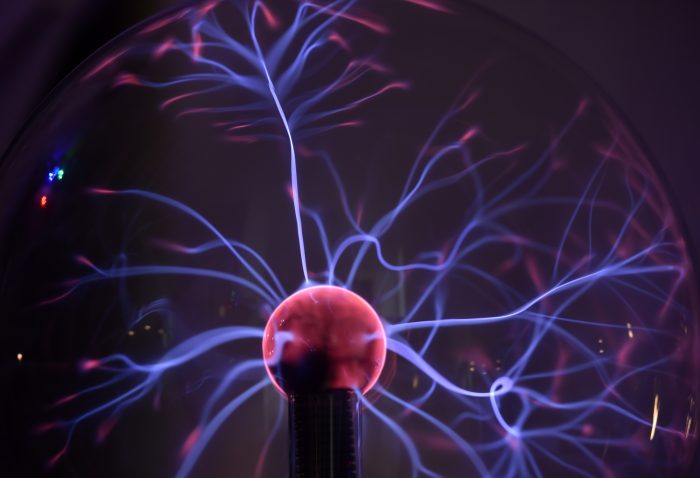What is static electricity? Have you ever wondered why you get a shock when you rub your socks on the carpet and then touch something? Or why the parking ticket dispenser always shocks you when you press the button to print your ticket. Most people over the age of four will tell you it is because of static electricity. But ask them how it works and they will respond with a blank look. If you want to be more fun at parties and learn a little something about the innate nature of the universe continue reading.
The high school science lesson you forgot
All matter in the universe is made of atoms. An atom is made of protons, neutrons, and electrons. The electrons orbit the atom. (If you want to get really technical, electrons are fluctuations of a field that permeates the entire universe, but I digress.)
It is a property of nature that things move from areas of high concentration to low concentration. Cold air rushes out an open door on a hot day. If you push on a champagne cork it will fly off into the distance forced out of the bottle by pressure. This is also what happens when you go on the trampoline wearing socks!
When you rub your socks on the mat you build up a charge. Some atoms have more sway with electrons than others. They have a real ‘positive’ personality. The atoms in your socks are more appealing to electrons than the atoms in your carpet, so the cheating little subatomic particles leave them for the better offer. The result is that the electrons in the atoms that make up your body now have more energy than most of the things around them. As a result, if you then happen to touch something that conducts electricity you get a static discharge. The electrons rush into whatever you just touched, and you get a zap. You are acting as a circuit.
You may be a beautiful person, but unfortunately, to an electron you are no different to a piece of copper wire – that is to say, a path of less resistance used by the universe to maintain the constant equilibrium that it craves.
Why does static electricity make your hairs stand on end?
This desire for electrons to want to move from one place to another is called charge. As much as electrons want to move into places where there are few other electrons they want to stay away from places where there are lots of electrons. Your hair is light enough that the powerful electromagnetic force generated by electric charge can overcome gravity, which is a comparably weak force.
What’s the deal with lightning
Lightning is one of the larger scale displays of static energy. It works in exactly the same way. There is a bit of debate as to how clouds get so highly charged. The going theory is that the turbulent winds separate the charges, just like you rubbing your socks. Then when there is enough energy it will discharge and we see our big lightning strikes.
Lightning doesn’t strike down. Fun fact; what actually happens is the electric current moves down in a step ladder. It feels around for the path with the most positive charge and discharges moving down in steps. Almost instantaneously, a larger more direct discharge travels from the ground upwards to meet it half way. This whole process takes just a tiny fraction of a second. There is also more than one stroke in a bolt of lightning, and they all follow the same or very similar paths to evenly distribute the charges to the best of nature’s ability.
Want to know more? Continue reading on Wikipedia.
The electricity market is never static. Call Bulk today to see how group buying power is helping Australian homes and business save on their electricity bill.








